
FIRST TRAIN IN INDIA 1853 and other 1860 trains
SEE:-STORY AND HISTORY OF -INDIAN TRAINS AFTER INDEPENDENCE :-http://pazhayathu.blogspot.in/2010/08/story-and-history-of-indian-trains.html
The Rewari Steam Locomotive Shed of the Northern Railwayshttp://oldphotosbombay.blogspot.in/2012/12/the-rewari-steam-locomotive-shed-of.html
Thull Ghat Station, Indian Peninsular Railway, 1866
INDIA The East India Railway Bridge & Viaduct at Sursuttee - Antique Print 1853

Gt Indian Peninsula Railway: accident, print, 1869
GETTY AND ALAMY WERE NOT BORN WHEN THESE PHOTOS TAKEN IN INDIA.BUT STILL THEY PUT THEIR STAMP AND SELL IT FOR PROFITJ. Paul Getty
Description


below:-Sketches, Indian Railway: Engineers camp , 1857




above:-East Indian Railway opening: Burdwan Station, 1855
Indian Railway History
The credit from the UK investors led to the hasty construction of a rail system over the next few years. On 22nd Dec' 1851, the first train came on the track to carry the construction material at Roorkee in India. With a passage of one and a half years, the first passenger train service was introduced between Bori Bunder, Bombay and Thana on the providential date 16th Apr' 1853. This rail track covered a distance of 34 kms (21 miles). Ever since its origin, the rail service in India never turned back.
The British Government approached private investors and persuaded them to join the race with a system that would promise an annual return of 5% during the early years of operation. Once finished, the company would be transferred under the Government ownership, yet the operational control will be enjoyed by the original company. In 1880, the rail network acquired a route mileage of about 14,500 km (9,000 miles), mostly working through Bombay, Madras and Calcutta (three major port cities).
By 1895, India had started manufacturing its own locomotives. In no time, different kingdoms assembled their independent rail systems and the network extended to the regions including Assam, Rajasthan and Andhra Pradesh. In 1901, a Railway Board was formed though the administrative power was reserved for the Viceroy, Lord Curzon. The Railway Board worked under the guidance of the Deptt of Commerce and Industry. It was comprised of three members - a Chairman, a Railway Manager and an Agent respectively.
For the very first time in its history, the Railways instigated to draw a neat profit. In 1907, most of the rail companies were came under the government control. Subsequently, the first electric locomotive emerged in the next year. During the First World War, the railways were exclusively used by the British. In view of the War, the condition of railways became miserable. In 1920, the Government captured the administration of the Railways and the linkage between the funding of the Railways and other governmental revenues was detached.
With the Second World War, the railways got incapacitated since the trains were diverted to the Middle East. On the occasion of India's Independence in 1947, the maximum share of the railways went under the terrain of Pakistan. On the whole, 42 independent railway systems with thirty-two lines were merged in a single unit and were acknowledged as Indian Railways. The existing rail networks were forfeited for zones in 1951 and 6 zones were formed in 1952. With 1985, the diesel and electric locomotives took the place of steam locomotives. In 1995, the whole railway reservation system was rationalized with computerization.

old railbus photo

old rail-car photo
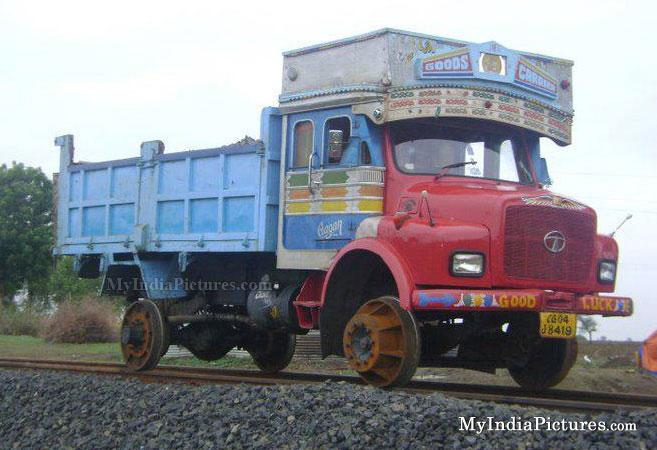
rail truck

&Train on truck
India Amazing Train Routes
IR boasts of more than 7,500 railway stations in its periphery. It has a fleet of not less than 7800 locomotives, 40,000 coaches & 3,26,000 wagons. 9 pairs of Rajdhani and 13 pairs of Shatabdi Express Trains run on the rail tracks of India. In 1977, the National Rail Museum was established at New Delhi. Given here is a list providing some interesting and amazing facts about Indian Railways.
Indian Railways Interesting Facts
First Passenger Train Ran On: 16th April 1853 (between Bombay to Thane)
First Railway Bridge: Dapoorie Viaduct on the Mumbai-Thane route
First Rail Tunnel: Parsik Tunnel
First Ghats Covered by Rail Lines: Thal and Bhore Ghats
First Underground Railway: Calcutta METRO
First Computerized Reservation System Started In: New Delhi (1986)
First Electric Train Ran On: 3rd Feb' 1925 (between Bombay VT and Kurla)
Toilets on Trains Introduced In: 1891 (1st Class) & 1907 (lower classes)
Shortest Station Name: Ib (Orissa)
Longest Station Name: Sri Venkatanarasimharajuvariapeta (Tamil Nadu)
Busiest Railway Station: Lucknow (64 trains everyday)
Longest Run (Time): Himsagar Express (3751 km in 74 hrs and 55 min)
Shortest Run: Route between Nagpur and Ajni (3km)
Longest Run for Daily Train: Kerala Express (3054 km in 42.5 hrs)
Longest Non-Stop Run (Distance): Trivandrum Rajdhani (528 km in 6.5 hrs)
Longest Railway Platform in the World: Kharagpur (2,733 ft in length)
Longest Railway Bridge: Nehru Setu on Sone River (10044ft in length)
Longest Tunnel: Karbude Tunnel of the Konkan Railway (6.5 km)
Oldest Preserved Locomotive: Fairy Queen (1855), still in working order
Gauges of Track: 4 Gauges; BG (5'6"), MG (1 metre), NG (2)
IR Daily Runs: About 14,000 trains
IR Daily Carries: More than 11 million passengers & 1 million tonnes of freight
IR's Only Line with Rack & Pinion System: From Mettupalayam to Conoor
IR's Fastest Train: Bhopal-Shatabdi (runs at a speed up to 140 Km/ph)
Railway Station with all the Three Gauges: Siliguri Railway Station
Route Kilometers of Track: More than 62,000 kms
People Employed in IR: About 1.6 million people
Train with Maximum Number of Halts: Howrah-Amritsar Express (115 halts)
Trains without Commercial Halts: Sampoorna Kranti Express, Howrah Rajdhani, Bombay Rajdhani, Pragati Express and Pune Shatabdi
Stations across State Lines: Navapur (Maharashtra and Gujarat), Bhawani Mandi (Madhya Pradesh and Rajasthan)
Classes of Travel on Indian Railway: Ist AC, 2nd AC, 3rd AC, AC Chair Car 2nd sleeper & 2nd ordinary
1853 BOMBAY -THE FIRST TRAIN-INDIA


A SIMILAR PHOTO FROM USA OF THAT SAME PERIOD BELOW:-

*"Accident on the East Indian railway between Ahmoodpore and Rampore," from the Illustrated London News, 1863*



The track loop: trains climbed up to Darjeeling, then turned around and headed back down; an albumen print, c.1870
*another view of the Darjeeling track loop, c.1880's*;


*a railway bridge near Darjeeling, c.1890's*

"Embarkation of artillery in railway trains in India"*
FIRST TRAIN IN INDIA 1853-bombay- and other 1860 to 1900 trains:-
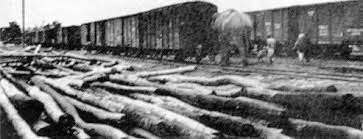
Elephants were widely used instead of engines – due to engine shortage and easier maneuverability of elephants.
Elephants were widely used instead of engines - due to engine shortage and easier maneuverability of

Indian Railways – The British Legacy
[1]]FIRST TRAIN IN INDIA 1853-bombay- and other 1860 to 1900 trains:http://oldphotosbombay.blogspot.in/2011/09/first-train-in-india-1853-bombay-and.html
[2]1934-FIRST AIR CONDITIONED TRAIN[ Frontier Mail ] IN INDIA USED ICE BLOCKS TO COOL THE TRAIN . VINTAGE BOMBAY TRAINS:-http://oldphotosbombay.blogspot.in/2011/02/bombay-to-ajmer-train-1908.html
----------------------------------------------------------------------------------------------------
-[4] http://www.nr.indianrailways.gov.in/view_section.jsp?lang=0&id=0,1,264
http://www.nr.indianrailways.gov.in/view_section.jsp?lang=0&id=0,1,264
[6]THE INDIAN RAIWAY FAN CLUB http://irfca.org/faq/faq-hist.html
[7]Industrial Locomotives of South Asia (ILSA)-/http://irfca.org/docs/locolists/industrial/
[8]Patiala State Monorail Trainways:-http://en.wikipedia.org/wiki/Patiala_State_Monorail_Trainways[9]Bombay Railway History Group http://bombayrailway.blogspot.in/
[10]RAILWAY POSTAL SERVICE PHOTOS:-http://oldphotosbombay.blogspot.in/2013/07/railway-postal-service-photos.html
[11]Locomotive Manufacturers, Components & Repair:-
Steam Locomotive Tourist Train (07/30/2006)
East India Rail OF the East India Company
It was but natural that the East India Company should seek a base in Bengal. With the decline in the Mughal empire, the Company increasingly grew more powerful, until it replaced Mughal rule completely. While Delhi or Agra had been the political capital of the Mughals, Bengal's commercial importance meant that Calcutta became the capital city from where the East India Company traded and ruled.
With the setting up of the East India Rail, closer links emerged between Calcutta and Delhi and made trade and commerce easier. Between 1882 to 1866, the East India Rail (which originally connected Calcutta to Varanasi) was extended up to Delhi and Agra.
I found this interesting map of the East India Rail, and how it progressed from Calcutta to Delhi, via Varanasi (the rail station in Varanasi is called Mughal-serai, and it was one of the many points along the Grand Trunk Road where the Mughals has built inns).
And here is a photo of the very first train that ran on the East India Railway.
Narrow gauge trains not to run from November 1
As per directions from the Railway Board, Jabalpur-Nainpur (110km) section was closed on October 1. Now remaining sections viz Nainpur-Chhindwara (141km), Nainpur-Mandlafort (43km), Nainpur-Balaghat-Howbagh (186km), and Nagpur-Chhindwara (147km) will be closed for traffic. All these sections will be converted into broad gauge.
However, trains on 110km Nagpur-Nagbhid section will continue to operate as usual. SECR's senior divisional commercial manager (SrDCM) Tanmay Mukhopadhyay said, "It was necessary to close down the sections to start physical work of gauge conversion. Passengers will get faster and better facility of transport once these sections are converted into broad gauge."
Mukhopadhyay said though narrow gauge sections would be closed, rail reservation counters at Howbagh, Nainpur, Mandlafort, Saunsar and Saoner would continue to function.
The SECR officials said after commissioning of the broad gauge, the running time between Nagpur-Chhindwara, Chhindwara-Nainpur and Nainpur-Jabalpur will be reduced to maximum 2.30 hours and between Nainpur-Balaghat to 1.30 hours. Besides, an alternate route between Amla and Nagpur will be available on Nagpur-Itarsi trunk route.
RAILWAYS OF THE RAJ: A Tribute to the Satpura Railway (Part I)
Narrow Gauge Rail Museum, Nagpur

 RAILWAYS OF THE RAJ: A Day at the Station
RAILWAYS OF THE RAJ: A Day at the Station
Nagpur Jabalpur Narrow Gauge Express - Wikipedia, the free ...

Steam Train, Agra, Uttar Pradesh, India, 1983
 Railroad line inspector being pushed by a retinue of workers to check for wear and tear on the tracks, Agra, India, 1983
Railroad line inspector being pushed by a retinue of workers to check for wear and tear on the tracks, Agra, India, 1983A ZA/3 engine leaves Bari near Agra with the Dholpur (Dhaulpur)-Tantpur {Narrow gauge}mixed train in 1984
THE PRINCE OF WALES AT TRICHINOPOLY,[south India] 1876: THE RAILWAY STATION BEFORE THE PRINCE'S ARRIVAL: LOADING CAMELS WITH TROOPS' BAGGAGE
============================================
TRAIN TRAVEL INDIA 1890
"Railway from Calcutta to Delhi--baggage train passing the fortress of Rhotas," from the Illustrated London News, 1851;
"Opening of the Madras railway," from the Illustrated London News, 1856
The track loop: trains climbed up to Darjeeling, then turned around and headed back down; an albumen print, c.1870


INDIA UNDER BRITISH RULE -MOST WERE POOR EXCEPT LAND OWNERS AND MAHARAJAS

1885 Bhopal Railway Choral Valley Viaduct India

Laying the Railway Through the Bolan Pass-1885-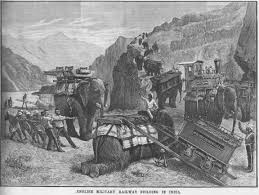
Bolan Pass | Railways of Afghanistan
IRFCA] William Edge
Railway from Calcutta to Delhi--baggage train passing the fortress ...

indian railways - | Indian Railways Glorious Past ...
Bullock-hauled train of the Gaekwar of Baroda's state railway - IRFCA
Railway historian unravels mystery behind rundown locomotive in Bengaluru park

Nestled under the canopy of trees in Bengaluru’s Indira Gandhi Musical Fountain Park lies an old locomotive. Seen as a piece of junk by the common public, no one realised that this was an old gem rusting away until five months ago. A social media post led TR Raghunandan, a former government employee and railway historian, to take an interest in the engine and start researching it.
Raghunandan revealed this when speaking at a small event organised by Heritage Beku, a citizens’ group aimed at preserving the city’s heritage. Officials from the state Horticulture Department and the Railways were also in attendance.
“I’ve been working closely with the National Rail Museum and was conducting research on other locomotives in the city when I happened to see a picture posted by a friend on social media. That piqued my interest and I began researching this engine,” the railway historian recounted.
After carefully scraping the tender [coal-car] of the engine, he stumbled upon the number 812 inscribed with paint, which was now fading. In addition to the number, the fact that the engine is narrow-gauge intrigued him to dive deeper to find more answers.
The research
“I’ve had a fated relationship with railways ever since I was a kid. During my youth, I’d devoted a lot of time towards studying rail engines. I knew right off the bat that this locomotive was special. I started to dive deeper into the locomotive manuals I had and came to the park often to study the locomotive, which led me to the Gwalior Light Railway,” Raghunandan said.

The locomotive was built specially to suit semi-arid regions and the longest existing narrow-gauge railway line in present-day India can be seen in Gwalior, he added.
Digging into the fairly well-maintained archives, the historian found that the engine was first brought to India during the 1960s for the Gwalior Light Railway. Studying old photos of locomotives similar to the NH/5 class, helped him, he said.
However, the quest to find the manufacturer of the engine still remained.
The quest in different countries
In a bid to learn about the manufacturer of the engine, Raghunandan travelled across countries and continents. His search extended to different places in countries such as the US, Japan and the United Kingdom.
“In the UK, I met a person who had taken a photograph of the locomotive 811 in London. I got as much information from him as I could. The model seemed like an American one but uncertainty still lingered. After multiple difficult attempts, I finally found some archival documentation done by Hugh Hughes on the locomotives in India,” added Raghunandan.
The four-volume book series finally gave him the answers. He found out that the engine was manufactured by Japanese firm Nippon Sharyo in the year 1959 unlike his inference that it’d been manufactured by Baldwin Locomotive Works, Philadelphia, USA. “We’re of the same age,” Raghunandan quipped, as he was born in 1959.
The locomotive also has its fair share of history, he said, before letting Kannabiran, who was involved in the building of the park, speak about the engine.
The journey of the locomotive
Kannabiran recalled that it was in 1995 that the then Railway Minister CK Jaffer Sharief helped them procure the Japanese locomotive, which had been operational in Gwalior, for the park. This and similar locomotives were stored in Lucknow and Varanasi after they were replaced by broad-gauge engines.
“We wanted something to commemorate the contributions of Minister Jaffer Sharief [who represented the Bengaluru North constituency], and one way was to install a historic locomotive in the park. We contacted South Western Railway, who informed us about all the engines stored in Varanasi. We travelled there and selected the engine that we see in this park,” Kannabiran said.
The locomotive had become an object of marvel, he reminisced while talking about how children would rush to the park during holidays just to see the locomotive emit smoke after they put in coal. The fascination inspired them to come experiment with it, he said.
But now the engine is sadly in a battered condition and in need of restoration.
Restoration
The Horticulture Department, which manages the park, the Railways and Heritage Beku have now teamed up in hopes of restoring the engine to its original glory. Raghunandan will be assisting in the restoration process, said Priya Chetty Rajagopal, a member of Heritage Beku.
“We have support from the department but they have their constraints too. We wanted to start a public drive where the citizens of the city assist in the restoration work apart from the officials,” Priya added.
Raghunandan added that the locomotive will weather away further if its restoration is not started soon, with the city losing another structure with a rich heritage. He urged the public to come forward and help with the engine’s restoration.

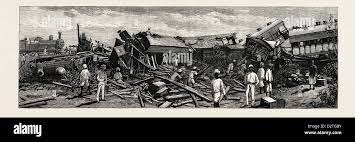


















.jpg)


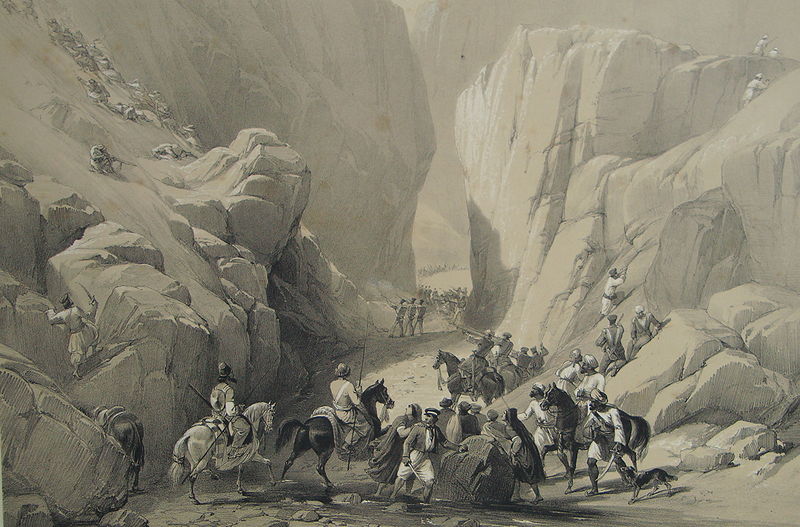
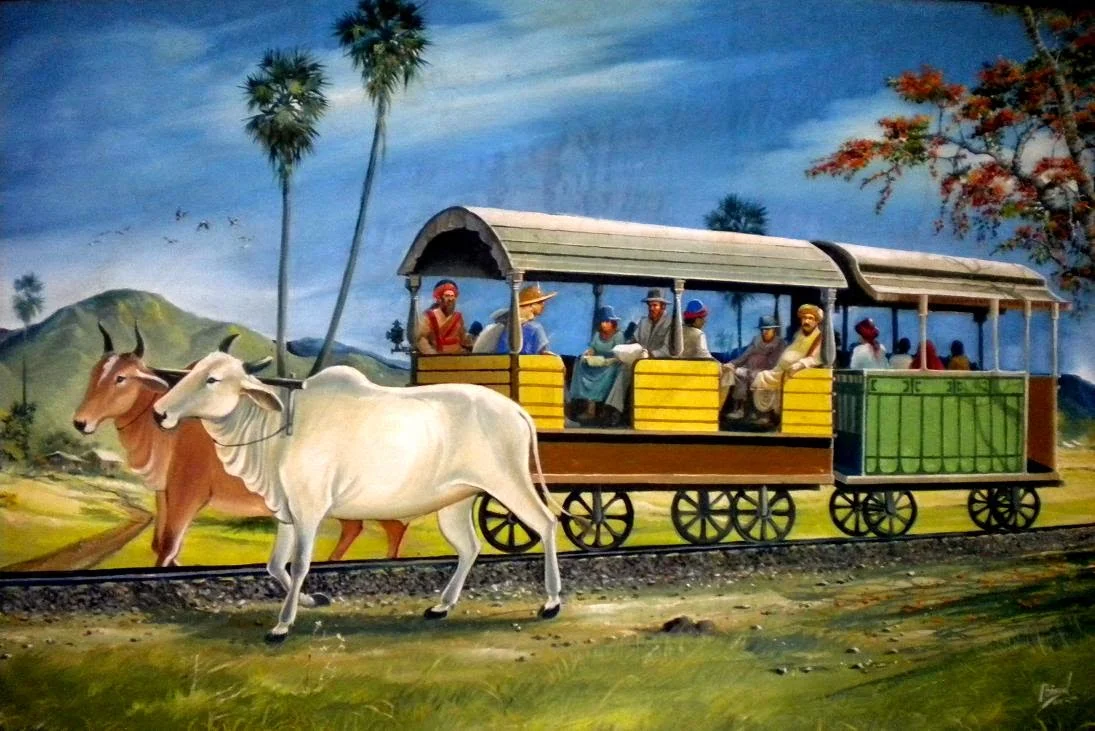
No comments:
Post a Comment